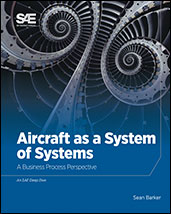Journal Article
ECOA - A New Architecture Concept for Complex Military Software Systems
2014-09-16
2014-01-2227
ECOA is an active software architecture research programme conducted by the French Republic and United Kingdom. It is one product of the recent Defence and Security Co-operation Treaty signed between the two nations. This paper provides an overview of the programme goals and progress as well as an introduction to the technology being developed and comparison to related initiatives. The goal of the ECOA programme is to define an open software architecture that enables collaborative development of mission system software. The ECOA programme is needed to reduce development and lifecycle costs of future military air programmes. For this reason the programme has a specific focus on combat-air mission systems but the underlying technology is general purpose, applying to multiple military and civil domains. At present, the programme has defined a concept, delivered a set of initial technical standards and produced a joint demonstrator to validate the technology developed.

